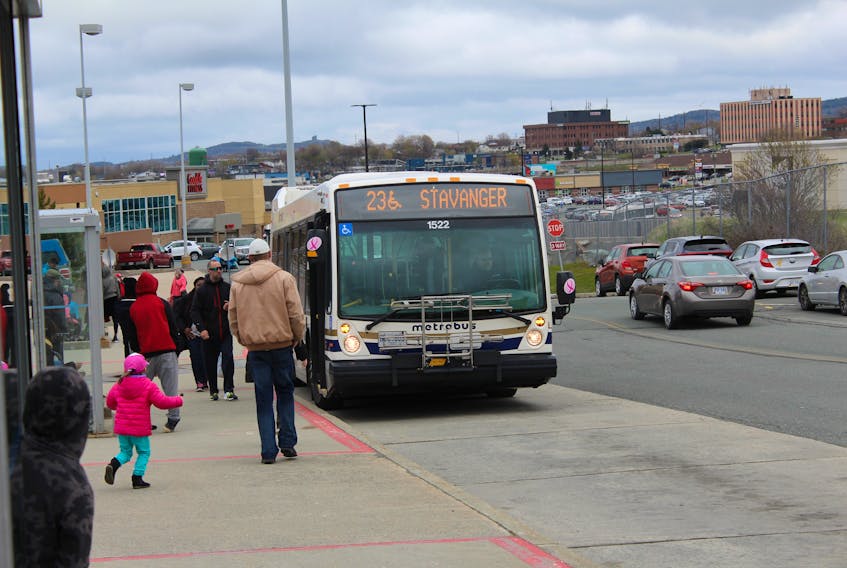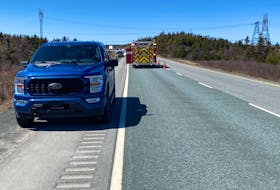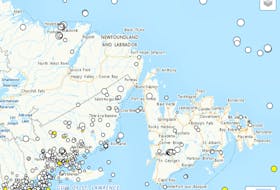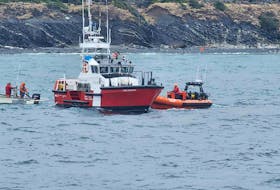It’s no secret this province has dire health statistics: we lead the country in rates of diabetes, high blood pressure and obesity.
But the surprising place some people are looking to change that is with the public transit system.
Taking the bus can improve the health of our overall population, according to one Memorial University researcher.
Daniel Fuller is the Canada Research Chair in population physical activity and he’s been working in this province for a couple of years to improve rates of physical activity.
For Fuller, that doesn’t mean turning everyone into bodybuilders and marathon runners.
“We don’t have to go to the gym, we don’t have to run, we don’t have to be ‘sporty’—we just have to walk to the bus.”
Daniel Fuller, Canada Research Chair in population physical activity
“It’s about trying to change the behavior of the people who are doing the least physical activity right now,” he said.
“It’s about how can we make it so that the environment encourages people to go from no physical activity to just a small amount of physical activity?”

Fuller said we rank among the lowest across Canada in the number of people who bike or take the bus to work.
“So, the potential is there to make changes to the environment that could influence people’s health.”
Take a walk to the bus stop
No. 1 on Fuller’s list is to get an uptake in people riding the bus.
Fuller said people who use public transit tend to accumulate the recommended 150 minutes of physical activity per week simply by walking to and from bus stops.
In a recent study he concluded in Saskatoon, Fuller found that people who used at least one mode of active transportation (either taking the bus, walking, or cycling) had an average Body Mass Index of 1.6 points lower than people who only drove their car.
“We don’t have to go to the gym, we don’t have to run, we don’t have to be ‘sporty’—we just have to walk to the bus.”
Fuller is working on several projects to increase rates of public transit use in St. John’s. He’s working with the City on a household travel survey, and he’s also working on developing an app that will predict a person’s mode of transportation.
“To say, ‘OK, we know that you’re in a car right now,’ or, ‘We know that you’re walking,’ or, ‘We know that you’re on a bus,’ and then potentially after that to intervene and to say, ‘Oh, you’re getting in your car right now,’ or, ‘You’re going to get in your car in 10 minutes – here is a potential bus route that would be about on par with your car trip’ — that’s the sort of potential behavioural intervention that we’re exploring.”
Fuller also worked with the city to develop its application to the Smart Cities Challenge — a cross-country competition for awards up to $50 million to find solutions to an identified problem — in the case of St. John’s, the proposal was to develop an integrated mobility network in which people have many choices in how they can get around the city.
Timely arrival is a motivator
“So, if you want to take the bus to work you should be able to get there in a reasonable amount of time — it should be an option,” explained St. John’s councillor-at-large Maggie Burton.
The goal is to increase active modes of transportation to and from work in the city by 40 per cent by 2024 in order to get St. John’s above the national average.
“It’s really important for all of Newfoundland and Labrador to lower our heath costs, and chronic disease is a huge strain on our health system, so the more we can prevent people from developing Type 2 diabetes through active transportation, the better.”
Burton said the city is taking small steps towards improving transportation options in order to get an uptake in people using the bus, biking, or walking.

She said the first step was the Smart Cities Challenge application and now the city is focused on “continuing to bring in little policies one at a time.”
She said there needs to be pressure on the province to amend the City of St. John’s Act so that the city can make changes without seeking the province’s approval for “every small change.”
Burton is passionate about how the environment of a city can be tweaked to improve people’s health, and along with Coun. Debbie Hanlon she recently returned from an international conference in Ottawa addressing such topics, with hopes to bring a lot of ideas to council.
One of those ideas includes ensuring that new developments consider walkability, transit, and cycling in the planning.
“Public health is not just a provincial responsibility, it’s really a city planning imperative at this point,” said Burton.
Fuller said he’s “really hopeful” about the direction the city is taking, but added big changes need to be made in order to get more people riding the bus, including increasing the number of bus routes in areas with greater population density, and including bus passes with university tuition.
“Public health is not just a provincial responsibility, it’s really a city planning imperative at this point.”
St. John’s councillor-at-large Maggie Burton
But Fuller said we also need to think of ways to decrease the number of people who only commute using a personal vehicle.
“Essentially, we’ve created the environment where you can drive on a road with little or no impediments at a very high speed and you can park right in front of where you want to go and it costs you nothing, and that’s what people are used to and that’s part of what’s going to have to change.”
Fuller said he’s noticed an appetite for change, though whether that appetite is still there when, as Fuller said, “the rubber hits the road and we’re going to take lanes away (from cars) and take parking away” remains to be seen.
Twitter: juanitamercer_









